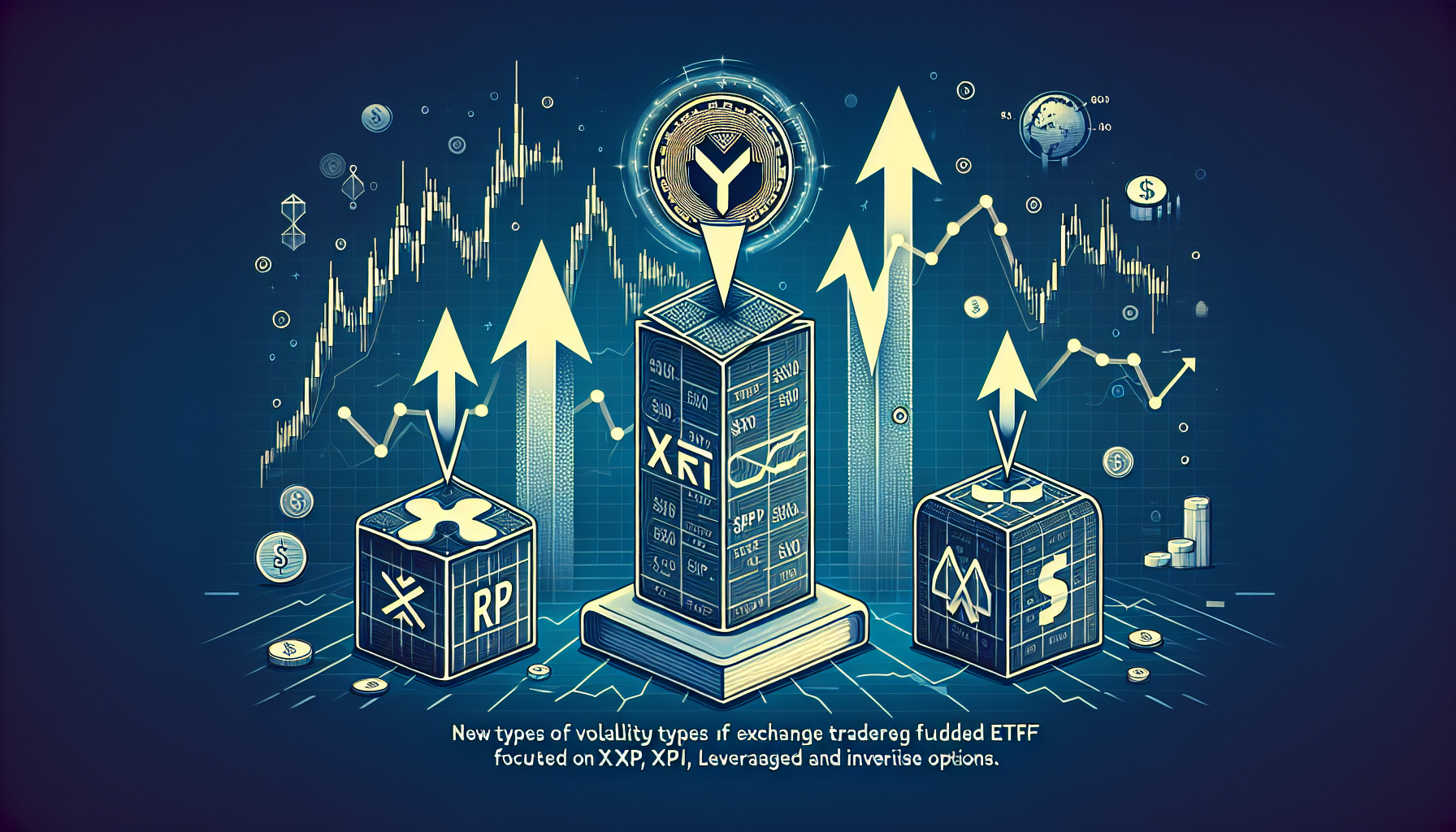Volatility Shakes Up the Market with XRP ETF Filings
In a bold move that could reshape the cryptocurrency investment landscape, Volatility Shares has filed for three new exchange-traded funds (ETFs) centered on XRP. This development adds to the growing interest in XRP-focused investment products, signaling a potential shift in how investors engage with digital assets. The filings include a spot XRP ETF, a 2x leveraged XRP ETF, and an inverse -1x XRP ETF, each catering to different investor strategies and risk appetites.
What Are These XRP ETFs and How Do They Work?
Volatility Shares' proposed ETFs aim to provide investors with diverse ways to gain exposure to XRP, a cryptocurrency that has been at the center of regulatory and market attention. Here’s a breakdown of the three ETFs:

- Spot XRP ETF: This fund is designed to track the price of XRP directly, offering investors a straightforward way to invest in the cryptocurrency without holding it themselves.
- 2x Leveraged XRP ETF: Aimed at more aggressive traders, this ETF seeks to amplify daily price movements by a factor of two, potentially doubling gains—or losses.
- Inverse -1x XRP ETF: This product allows investors to bet against XRP’s price, profiting when the cryptocurrency’s value declines.
These ETFs cater to a wide range of investors, from those seeking simple exposure to XRP to those looking for more sophisticated trading strategies.
Why Are XRP ETFs Gaining Traction?
The filings by Volatility Shares come at a time when the market is buzzing with anticipation for regulatory approval of XRP ETFs. Traders on platforms like Polymarket are currently pricing in a 77% chance that a spot XRP ETF will be approved this year, though the odds drop to 35% for approval before July 31. This growing optimism reflects a broader trend of institutional interest in cryptocurrency-based financial products.
Volatility Shares is not alone in this endeavor. Other prominent asset managers, including Grayscale, WisdomTree, Bitwise, 21Shares, CoinShares, and Canary Capital, have also expressed interest in launching XRP ETFs. This collective push underscores the increasing demand for regulated, accessible ways to invest in cryptocurrencies like XRP.
Regulatory Hurdles and Market Sentiment
Despite the enthusiasm, the path to approval is not without challenges. The U.S. Securities and Exchange Commission (SEC) has historically been cautious about cryptocurrency ETFs, citing concerns about market manipulation and investor protection. However, recent developments, such as the SEC’s acknowledgment of a 19b-4 filing by the New York Stock Exchange and Grayscale, suggest that progress is being made.

Meanwhile, Brazil is set to debut the world’s first spot XRP ETF, approved by the country’s securities regulator. This milestone could serve as a catalyst for similar approvals in other markets, including the U.S.
What Does This Mean for Investors?
For investors, the introduction of XRP ETFs could open up new opportunities to diversify their portfolios and gain exposure to the cryptocurrency market. The spot XRP ETF, in particular, offers a simple and regulated way to invest in XRP without the complexities of managing private keys or navigating crypto exchanges.
The leveraged and inverse ETFs, on the other hand, cater to more experienced traders who are comfortable with higher risk. These products could attract a new wave of institutional and retail investors, further legitimizing XRP as a viable asset class.
Potential Risks and Considerations
While the prospect of XRP ETFs is exciting, investors should be aware of the risks involved. Leveraged and inverse ETFs, for example, are designed for short-term trading and can lead to significant losses if not managed properly. Additionally, regulatory uncertainty remains a key factor that could impact the timeline and availability of these products.
Conclusion: What’s Next for the Market?
The filings by Volatility Shares and other asset managers mark a significant step forward in the evolution of cryptocurrency investment products. If approved, these XRP ETFs could drive increased liquidity and mainstream adoption of XRP, potentially boosting its price and market capitalization.
In the coming weeks, market participants will be closely watching for updates from the SEC and other regulatory bodies. A favorable decision could set the stage for a wave of new cryptocurrency ETFs, further integrating digital assets into the traditional financial system. On the other hand, delays or rejections could dampen investor sentiment and slow the pace of innovation.
Regardless of the outcome, the growing interest in XRP ETFs highlights the increasing convergence of cryptocurrency and traditional finance, paving the way for a more inclusive and dynamic investment landscape.

